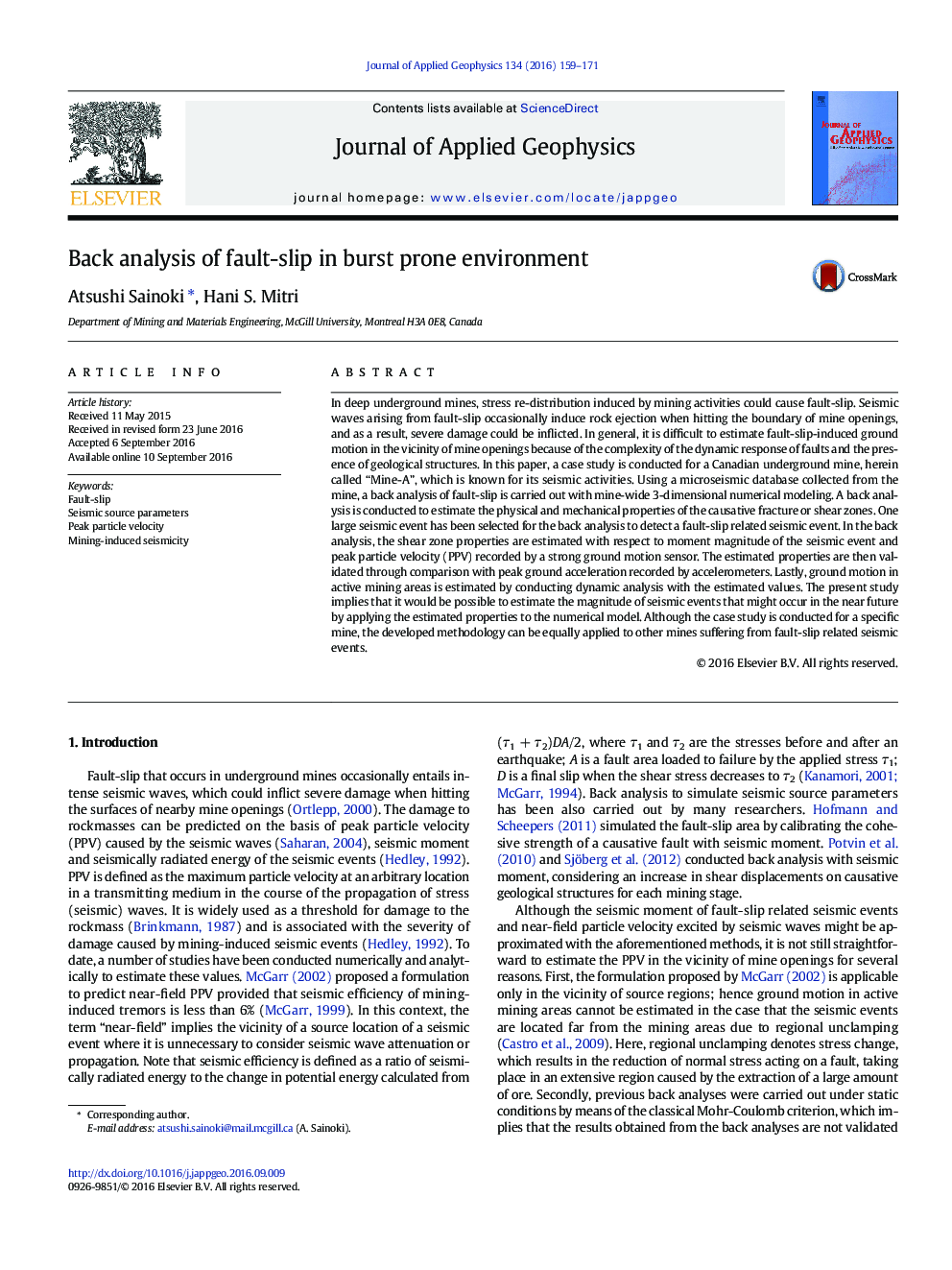| Article ID | Journal | Published Year | Pages | File Type |
|---|---|---|---|---|
| 6447006 | Journal of Applied Geophysics | 2016 | 13 Pages |
Abstract
In deep underground mines, stress re-distribution induced by mining activities could cause fault-slip. Seismic waves arising from fault-slip occasionally induce rock ejection when hitting the boundary of mine openings, and as a result, severe damage could be inflicted. In general, it is difficult to estimate fault-slip-induced ground motion in the vicinity of mine openings because of the complexity of the dynamic response of faults and the presence of geological structures. In this paper, a case study is conducted for a Canadian underground mine, herein called “Mine-A”, which is known for its seismic activities. Using a microseismic database collected from the mine, a back analysis of fault-slip is carried out with mine-wide 3-dimensional numerical modeling. A back analysis is conducted to estimate the physical and mechanical properties of the causative fracture or shear zones. One large seismic event has been selected for the back analysis to detect a fault-slip related seismic event. In the back analysis, the shear zone properties are estimated with respect to moment magnitude of the seismic event and peak particle velocity (PPV) recorded by a strong ground motion sensor. The estimated properties are then validated through comparison with peak ground acceleration recorded by accelerometers. Lastly, ground motion in active mining areas is estimated by conducting dynamic analysis with the estimated values. The present study implies that it would be possible to estimate the magnitude of seismic events that might occur in the near future by applying the estimated properties to the numerical model. Although the case study is conducted for a specific mine, the developed methodology can be equally applied to other mines suffering from fault-slip related seismic events.
Related Topics
Physical Sciences and Engineering
Earth and Planetary Sciences
Geophysics
Authors
Atsushi Sainoki, Hani S. Mitri,
